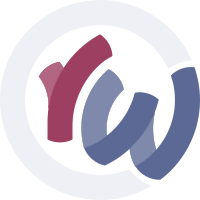Fall 2016 at Brooklyn College
| Course | Professor | Description | Textbook |
|---|---|---|---|
| CISC 3220 | Zhou | Analysis of Algorithms | Cormen, Leiserson, Rivest, Stein: Introduction to Algorithms |
| CISC 3230 | Cogan | Theoretical CS | Sipser: Introduction to the Theory of Computation |
| CISC 3310 | Schnabolk | Computer Architecture | Hamacher, Vranesic: Computer Organization and Embedded Systems |
| CISC 3410 | Levitan | Aritifical Intelligence | Russell, Norvig: Artificial Intelligence: A Modern Approach |
| MATH 3501 | Aulicino | Probability | Ross: A first course in Probability |
Now that I have attended every course at least once, I can give my initial impressions for each:
CISC 3220: Analysis of Algorithms with Neng-Fa Zhou
Textbook: Cormen, Leiserson, Rivest, Stein - Introduction to Algorithms
Video lectures and assignments: MIT Open Courseware 6.046J
This is the first time that Professor Zhou has taught this course, and he expressed great excitement at the opportunity to be able to lead students in what he considers the most important topic of a computer science curriculum.
Since MIT provides an outstanding online platform for teaching this course with several sets of video lectures taught by one of the authors of the book, Professor Zhou has decided to structure the course as a flipped classroom:
Features of a Flipped CISC 3220:
- Students are assigned video lectures and assignments from MIT 6.046J to view and complete before classroom sessions.
- Class sessions are spent reviewing the lecture and assignment, and executing in-class group assignments.
- Functionally, the class session act as recitation for the MIT lectures led by Professor Zhou.
I have had experience with this flipped classroom model, as I took MATH 2101: Linear Algebra over the summer with Professor Suzuki, who co-authored a paper about the outcomes of using a flipped classroom to teach linear algebra.
CISC 3230: Theoretical Computer Science with Eva Cogan
Textbook: Sipser: Introduction to the Theory of Computation
Video lectures: MIT Open Courseware 18.404j (first half of MIT course only).
During this course we will be covering chapters 1-5 and 7 of Michael Sipser’s text on Theory of Computation. There are a few interesting observations that I have made so far:
- This is my only course this semester that is not full.
- The CS major requires either this course or analysis of algorithms, with the latter being wildly more popular.
- Professor Cogan stated that this is ‘the most difficult course in the department’ and is intended ‘solely for people intending to pursue graduate school in computer science.’
- Most of the students have been engaged in the lecture so far, and ask insightful questions. This is contrary to my experience with most other classes, where there are only a handful of students that actively participate.
- Professor Cogan stated ‘I can tell this is a good group’ and ‘we are going to have fun this semester.’

Comments
test
test
Leave a Comment
Your email address will not be published. Required fields are marked *